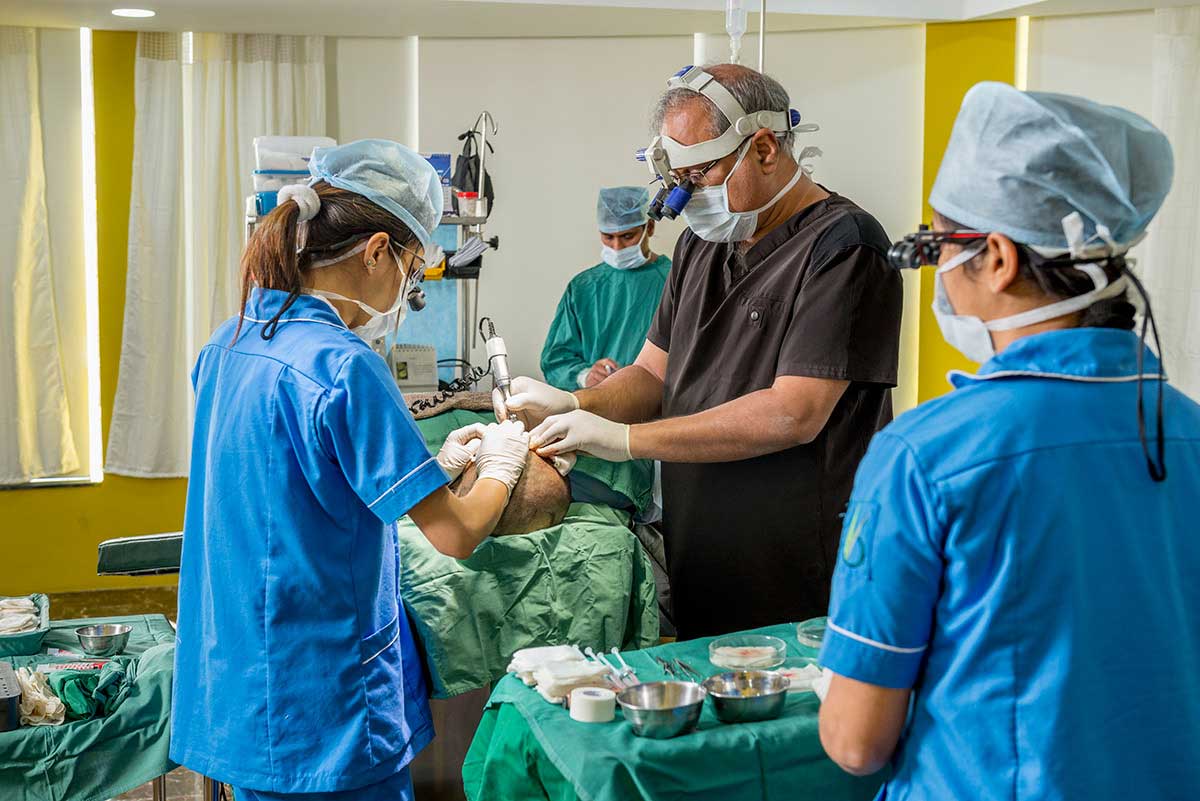With this common assumption that procedures done outside North America are subpar, I want to touch on a contentious issue: the continued, often unfounded criticisms some North American surgeons hurl at patients choosing to have their transplants abroad — whether in India, Turkey, or other global destinations.
Ironically, the criticisms aimed at international surgeons often mirror the very flaws in these critics’ own practices, sometimes rooted more in insecurities than in actual concern. For patients, the world has become a smaller place, and they no longer need to be bound by borders when seeking top-notch, affordable clinics. Yet, these practitioners would have you believe otherwise, using scare tactics to dissuade patients from making informed, independent choices based on due diligence and research.
Let’s get right into it: In this video I walk you through a patient’s story – a case of a hair transplant done in the USA a few years ago, where I’ve now been asked to step in for revision.
In contrast to the diligent work Indian surgeons put into showcasing our results, many North American clinics seem to spend their time casting aspersions on hair transplants performed in places like India and Turkey. Their social media and forums are littered with paid reviews and, let’s be frank, shills who are quick to malign our work.
Ask yourself this: how often do you see these North American surgeons openly displaying their own work on platforms like YouTube or their own websites? Not often.
Instead, they default to creating PR videos like, “Doctor reacts to a hair transplant done in Turkey,” “Doctor reacts to a hair transplant done in India,” or “Doctor reacts to celebrity transplants abroad.”
Here in India, we haven’t responded to these baseless claims until now. We’ve simply been busy doing our work. After all, “an idle mind is the Devil’s workshop!”
They want you to believe that the only reliable hair transplants are done in North America, while anything else must be inferior. They’ll say a hair transplant in Turkey is a poor choice and a hair transplant in India is a gamble.
Let’s be real — which century are they living in?
This rhetoric often comes from practitioners who themselves fall short of following the basic tenets of hair transplant surgery. In truth, the success of a hair transplant doesn’t hinge on the geographic location of the clinic; it’s determined by the surgeon’s skill, experience, and integrity. North American surgeons may criticize standards abroad, yet many lack the case volume and hands-on experience that allow surgeons in countries like India to excel. Experience sharpens technique, promotes meticulous planning, hones the art of decision making (which case to choose and which to stay away from) and prevents long-term complications.
The patient showcased underwent an FUE transplant in North America. The donor area is left with glaring shotgun scars — a ‘galaxy’ of visible marks, scattered across the scalp. This is not just cosmetically unappealing but speaks of poor technique and insufficient planning.
And this isn’t the first such case I’ve repaired from North America.
One of the fundamental principles of FUE is to respect the safe donor zone — the area where hair follicles are naturally resistant to hair loss.
Yet, in this case, the surgeon harvested from an area that has now thinned and balded, displaying a poor grasp of donor management that has compromised both aesthetics and future graft availability.
What’s most frustrating is that much of the criticism of FUE, especially concerning scarring or donor mismanagement, originates from North America, the very place where these issues are all too common. Ironically, many of these doctors lack the practical experience that Indian surgeons acquire, given the vast volume of cases we handle. In India, individual surgeons perform hundreds of procedures each year, and our national count exceeds 8 million annually. This immense experience gives us the opportunity to refine techniques, understand diverse hair types, and deliver results that match or exceed global standards.
Let’s be honest: poor surgical choices, substandard techniques, or inadequate hygiene can be found anywhere in the world.
If you exclude these poor examples, reputable hair transplant clinics in India consistently deliver superior results compared to many North American counterparts. And this is not a claim driven by bias or vendetta — the evidence is freely available for you to see online.
ITo conclude, before North American doctors criticize the work done abroad, it’s high time they reflect on their own practices. The real question is not where the surgery takes place, but the surgeon’s skill. And in India, at reputable clinics led by qualified doctors — be it plastic surgeons or dermatologists — we take pride in delivering ethical, precise, and consistent results for our patients.


